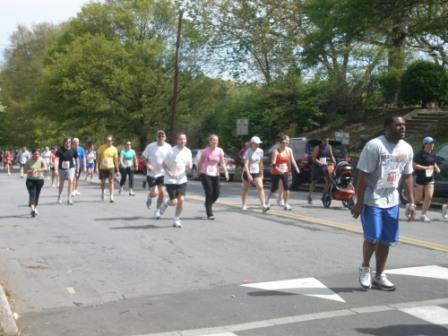Trail Running Technique for Running a Faster Trail Race
Tuesday, April 21st, 2009“For me, it’s just the way I live my life. I grip it and I rip it….Richard Gere’s a real hero of mine. Sting. Sting would be another person who’s a hero. The music that he’s created over the years – I don’t really listen to it. But the fact that he’s making it, I respect that. ” -Hansel from the movie ‘Zoolander.’
I’ve never seen you trail run, but the fact that you are on this website learning and adding trails, I respect that. There are many different techniques for trail running from how to cross water to techniques for whiping yourself around sharp corners. These are all good skills to have in your repertoire in a trail race, but a better technique is to do nothing at all. You’re good at that! Only worry about one thing during a trail race: running fast. How? By gripping it and ripping it like Hansel. That Hansel is so hot right now.
Don’t over think the trail. Run it at the same pace you would run on any other surface. Of course, you have to make some minor adjustments to your stride to avoid hazards and maneuver the trail’s path, but really you just need to run fast. The faster you run the quicker you will finish the race. It’s math, but don’t calculate it, just run the trail!
For example, have you ever thought about a problem or conflict for a long period of time only to make the same decision you would have made when you first encountered the issue? You just wasted a lot of time thinking. I subscribe to the school of thought that 95% of the time your gut reaction is correct. However, we spend 60% of our time on a problem trying to figure out that other 5% that our gut may have missed. That’s inefficient. It is the same on the trail. You spend more time slowing down and thinking about how you are going to approach the obstacle than if you would have just run past, through, or over it; 95% of the time getting the same result you would have if you thought about your approach.
Often runners see a tree and a sharp turn so they slow down to be able to grab it and whip themselves around. Don’t slow down, just whip yourself around as fast as you can. If you are approaching water, don’t map out how you are going to maneuver it, just make a one step move in your stride. You will instinctively know where to react to avoid as much of the water as possible without slowing yourself down. If the water is large, I suggest running straight through it. If there are rocks or roots on the trail, step on the small ones and barely alter your stride for the bigger ones. Don’t let the trail dictate how you run your trail race. Show the trail who’s boss! You’re the one that does all the dictating around here!
Grip it and rip it. That’s how I live my life bro and I’m correct 95% of the time. That’s an “A” all the time.




